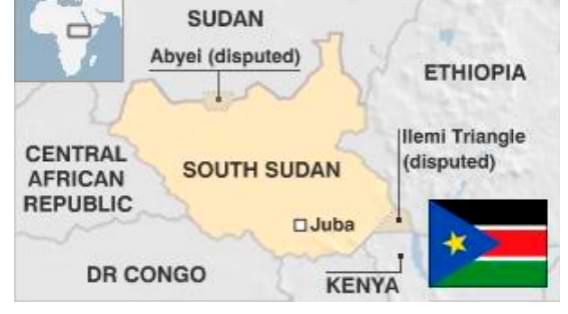Companion@360 → 7 Month programme to sharpen your writing skills → REGISTER NOW

South Sudan
Made up of the 10 southern-most states of Sudan, South Sudan is one of the most diverse countries in Africa. It is home to over 60 different major ethnic groups, and the majority of its people follow traditional religions. Independence did not bring conflict in South Sudan to an end. Civil war broke out in 2013 when the president fell out with his then vice president, leading to a conflict that has displaced some 4 million people.
Background
- 1956 – Sudan becomes independent but southern states are unhappy with their lack of autonomy. Tensions boil over into fighting that lasts until 1972, when the south is promised a degree of self-government.
- 1983 – Fighting starts again after the Sudanese government cancels the autonomy arrangements.
- 2011 – South Sudan becomes an independent country, after over 20 years of guerrilla warfare, which claimed the lives of at least 1.5 million people and more than four million were displaced.
- 2012 – Disagreements with Sudan over the oil-rich region of Abyei erupt into fighting, known as the Heglig Crisis. A peace deal was reached in June 2012 that helped resume South Sudan’s oil exports and created a 10km demilitarized zone along the border.
- 2013 – Civil war breaks out after the president, Salva Kiir, sacks the cabinet and accuses Vice-President Riek Machar of planning a failed coup. Over 2.2 million people are displaced by the fighting and severe famine puts the lives of thousands at risk.
- 2018 – Renewed bid to end civil war leads to a power-sharing agreement between the warring sides.
India – South Sudan
- India has developed close ties with Sudan and in recent years warmed up to the Government of South Sudan as well.
- India’s Election Commission had helped organise Sudan’s first general elections in the late 1950s and Indian engineers had played a major role in setting up the country’s sugar industry and railways.
- Similarly India was one of the first countries to open a consulate in South Sudan and accord recognition to the Government of South Sudan after its independence on 9 July 2011.
- At present, India’s investment in the two Sudans is over $3 billion. In the last decade, India’s investments have been mainly in the energy sector.
- In 2003, India’s ONGC Videsh Ltd (OVL) had invested $750 million to acquire 25 per cent equity held by the Talisman group in the Greater Nile Petroleum Operating Company (GNPOC).
- GNPOC is a consortium that also includes the China National Petroleum Corporation (CNPC), Malaysia’s Petronas and Sudan’s Sudapet. It had also invested in other energy assets in block 5A and 5B. Most of these assets are located in South Sudan.
Therefore, it is natural that conflict and instability in the region will have an adverse impact on India. - The relations between Sudan and South Sudan have worsened with armed conflict breaking out intermittently.
- Unfortunately, the countries have still not resolved their outstanding disputes on three crucial issues – energy, boundary demarcation, and citizenship.
- India along with the rest of the world should take urgent steps towards pushing the leaders of both the countries to peacefully negotiate and resolve the pending disputes.
Read Also GAIL



